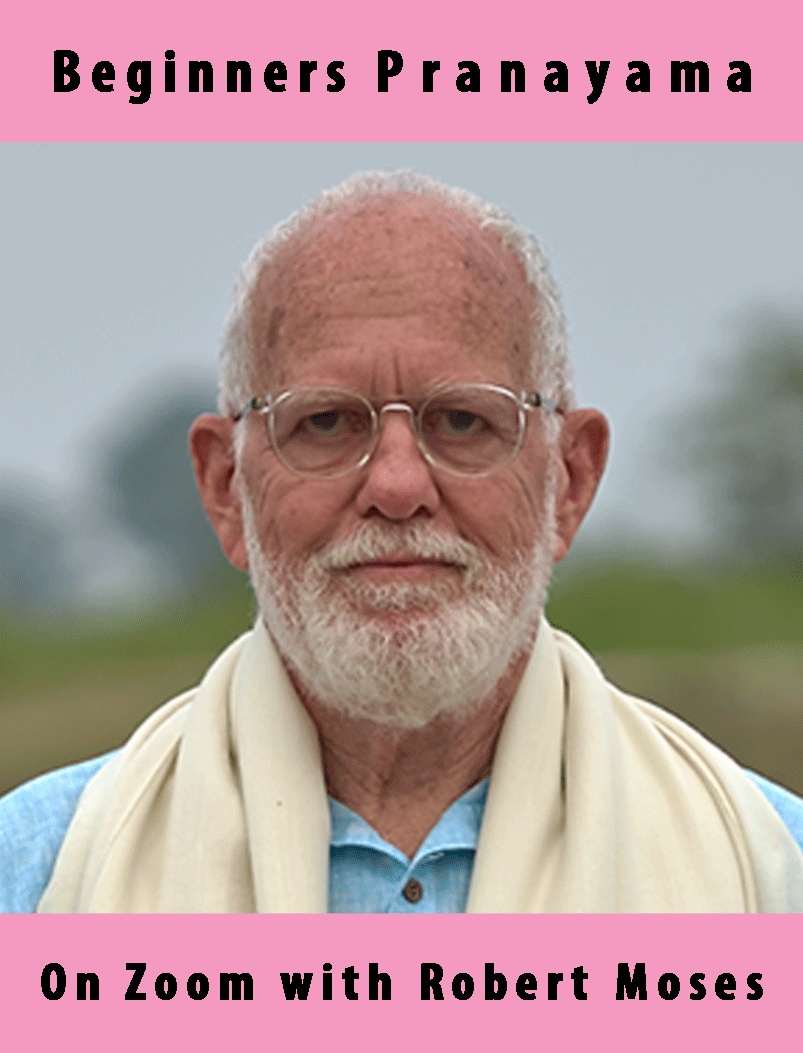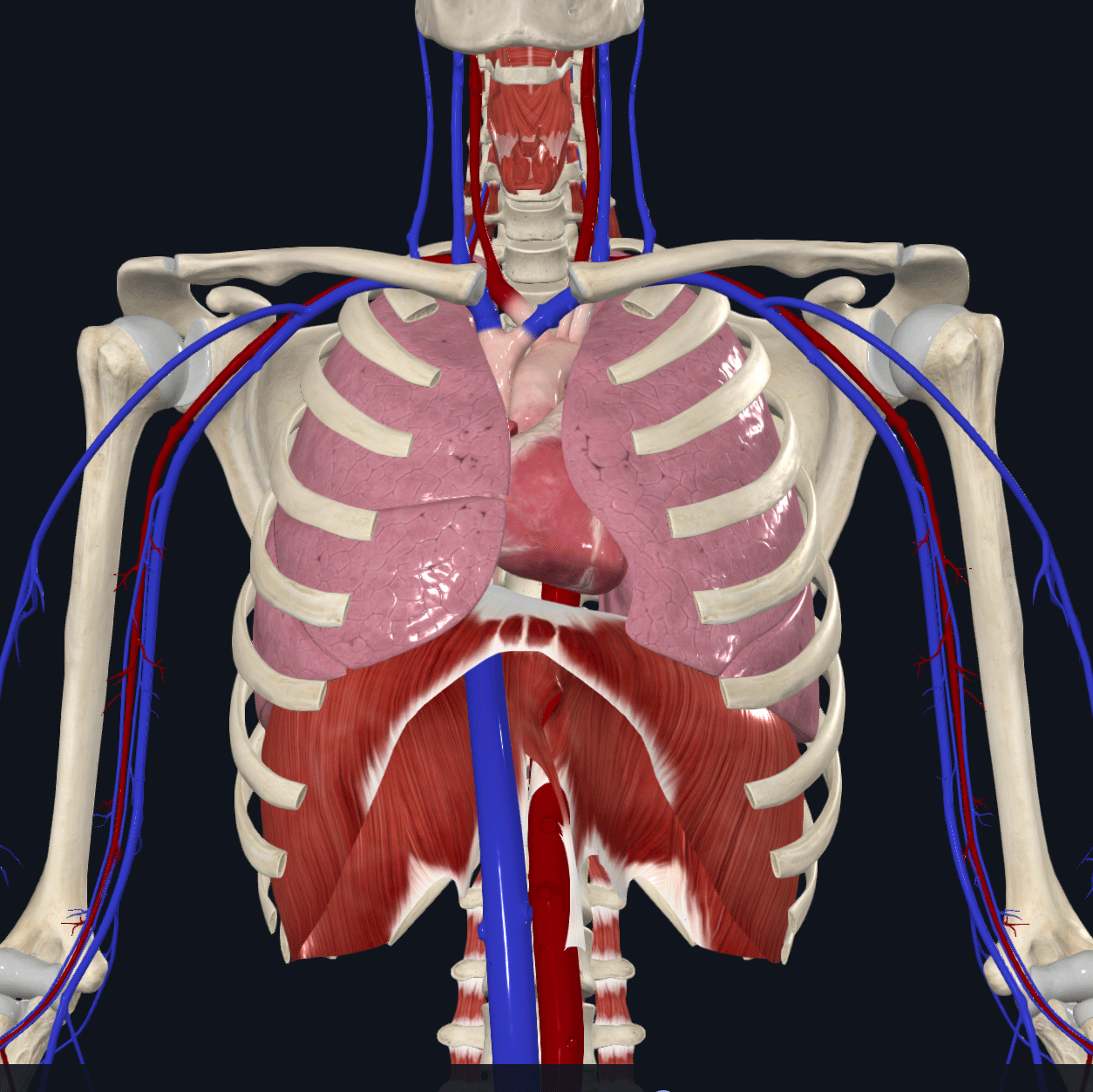Beginners Pranayama – Live on Zoom
SUNDAYS 8:30-9:30 AM USA Eastern Time.
4 ONE-HOUR CLASSES ON JANUARY 4, 11, 18 & 25, 2026
Please read through and REGISTER below.
The suggested price is only $54! Amazing value!
To start immediately, please take this course:
BEGINNERS PRANAYAMA • SELF-PACED LEARNING (SPL)
Start fresh and learn to breathe fully and deeply through the nose using your diaphragm and thoracic cage. Learn the fundamentals of deep yogic and resonance breathing techniques to restore balance within and harmonize all the life-sustaining systems of the body and mind. Breathing well and a balanced nervous system are the roots of well-being.
SOME EFFECTS OF PROPER BREATHING
- Slowing the respiratory rate may lead to deeper, more rhythmic breathing, which helps improve respiratory efficiency.
- Increasing heart rate variability (HRV): Deep and rhythmic breathing helps increase HRV, which is related to the balance of the autonomic nervous system and may be associated with better cardiovascular health and stress-coping abilities.
- Stimulating the vagus nerve: prolonged exhalation stimulates the vagus nerve (parasympathetic nervous system), thereby reducing the heart rate, lowering blood pressure, and facilitating a more relaxed state.
- Improving lung function: deep breathing and prolonged exhalation increase lung capacity, improving ventilation and gas exchange efficiency. This is beneficial for increasing oxygen intake and carbon dioxide excretion.
- Reducing respiratory muscle tension: A regular breathing pattern reduces discomfort and tension in the respiratory muscles, helping to improve breathing coordination.
- Adjusting acid-base balance: Deep breathing and slow exhalation help adjust acid-base balance by reducing carbon dioxide emissions, helping to maintain blood acid-base balance.
- Lowering stress levels: regular deep breathing activates the parasympathetic nervous system, reduces the secretion of stress hormones, and helps alleviate physical and psychological tension.
- Improving attention and cognitive ability: Stable and deep breathing helps increase blood oxygen levels, which may be related to improved attention, cognitive ability, and clear thinking.
YOU WILL LEARN HOW TO IMPROVE THE FUNDAMENTALS OF PROPER BREATHING
1. PHYSICAL LEVEL • BIOMECHANICS
- How do we really breathe? How to breathe well! How does that help us maintain good physical and mental well-being? Healthier and happier!
- Air pathways of the human body. How to use them properly.
- Breathe using the diaphragm, intercostals & neck muscles effectively.
2. CHEMICAL LEVEL • BIOCHEMISTRY
- Exchange and metabolism of Oxygen, Carbon Dioxide, and Nitric Oxide.
- Balance the acid/alkaline levels in your blood for optimum health
3. CONTROL LEVEL • PSYCHOLOGICAL
- Nervous and Hormonal control and balance via conscious breathing.
- The positive effects of a balanced nervous system are far-reaching.
- The negative impacts of dysfunctional breathing can lead to long-term problems.
- How to influence the Nervous System and Hormones efficiently.
- Homeostasis of the body/mind is essential. Develop focus and will with regular practice.
WHAT IS HEART RATE VARIABILITY (HRV)?
- Understand this valuable means of monitoring your biomarkers.
- It is as important, if not more than, heart rate and blood pressure.
YOU WILL PRACTICE A VARIETY OF BREATHING EXERCISES
RESONANCE BREATHING
- A simple science-based method of respiration to bring about optimal health benefits and long-term peace and calm.
EASY AND EFFECTIVE PRANAYAMA PRACTICES
- Simple tapping and stretching to loosen the connective tissues, opening air pathways.
- 3 stages of functional breathing in the lying down and seated positions
- Resonance breathing uses set ratios that apply to everyone.
- Kapalabhati Kriya cleanses the air pathways and boosts your energy levels.
- Nadi Shodhana or Anuloma Viloma (Alternate nostril breathing).
- Brahmari Pranayama is used to increase your body’s nitric oxide levels.
- Different methods of deep relaxation or yogic savasana.
EXPLANATION
- We use a beautiful 3D App to show and explain the science of respiration.
- Questions are always answered.
- PDF files of the presentation are available.
- Friendly and encouraging small classes. Always open to discussion.
- Learn the pranayamas from the HaṭhaYogaPradīpikā (circa 15th century CE)
REGISTER
- After you register, you will receive a link to ZOOM in the confirmation email.
- Then register on ZOOM once for all 4 classes.
Use the same email for the Course and Zoom. - If you do not receive the link, PLEASE CHECK YOUR SPAM folder.
- Please keep the link safe and do not share it with anyone.
- If you’re unable to donate, please email me to request enrollment.
- Classes are recorded and always available in your account.
YOUR ACCOUNT ON NAMARUPA
- After you register, you will have an account on the Namarupa website.
- The videos and materials of the courses you take will always be available in your account.
- You can use them to practice as you keep learning the age-old art of Pranayama.
See the Resources page for a free warm-up video and to learn more.
Illustration by Satya Moses
Skeleton 3d4medical.com
Suggested price: $54.00




